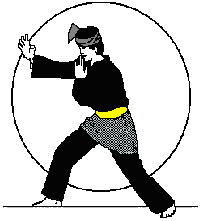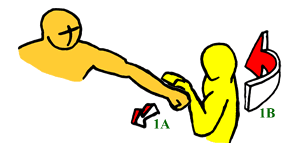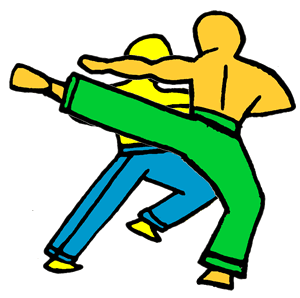The most difficult silat technique in the worldDo you want to see the most difficult silat technique in the world? Well, below is shown exactly that. The most difficult silat technique in the world. |
|||||||||||||||||||||||||||||||||||||||||||||||||||||||||
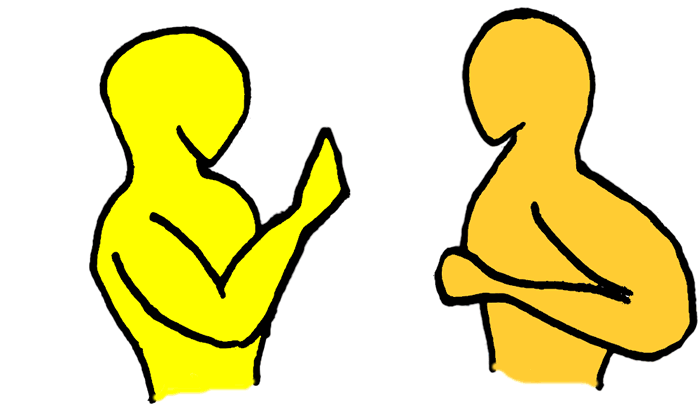 |
|||||||||||||||||||||||||||||||||||||||||||||||||||||||||
Bet you think I’m crazy. You figured it is such a common technique. A parry cum a wrist catch. You can see it in almost all styles of martial arts, not only in silat. |
|||||||||||||||||||||||||||||||||||||||||||||||||||||||||
But here’s the thing; in training this looks simple enough. But in training your movements are choreographed. Actually applying this technique is a totally different matter. I’m not talking about a block or a parry, but a parry that actually catches the wrist or the hand before the end of a punch. If an opponent in a fight attacks you with a swinging arm, it is possible to easily block and catch his wrist/hand. I had actually witnessed someone doing this when he was insulted in school. He is not a martial artist. But if you meet an opponent well trained in the punching arts like boxing or karate, where the punches tend to be linear and efficient, it is very difficult to catch the punch.
|
|||||||||||||||||||||||||||||||||||||||||||||||||||||||||
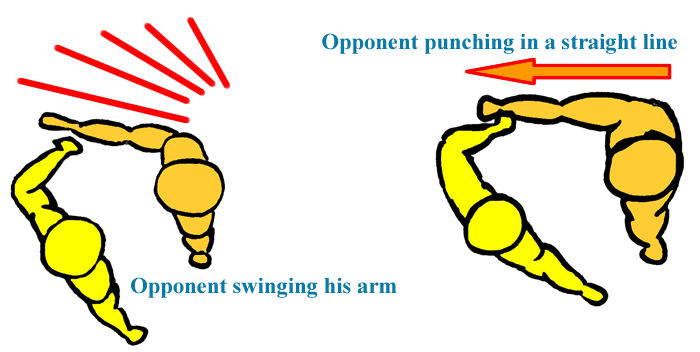 |
|||||||||||||||||||||||||||||||||||||||||||||||||||||||||
Consider a karate punch. A straight economical punch, with the punching hand retracted after the punch is completed. Test it yourself; square off with an opponent and see if you can catch his punching arm. Punches are just too fast!!! Is it possible to catch a hand/wrist during sparring and actually apply a locking technique?Yes, it is. But so far I have not seen anybody do it. Maybe nobody is skillful enough, or maybe (as my instructor suggested) nobody really bothers because the idea is to score points and takedowns and striking techniques are good enough. Any semblance of grappling or interlocking of arms is usually met by a ‘STOP’ from the referee, anyway.
|
|||||||||||||||||||||||||||||||||||||||||||||||||||||||||
|
|||||||||||||||||||||||||||||||||||||||||||||||||||||||||
About Silat Locking TechniquesSome silat locking techniques look more like striking techniques. Either you strike the groin area or the neck area. There is one where you just knee the stomach, sweep the legs and kick the opponent when is lying on his back. Some silat techniques are more like choking techniques where you swoop your arm around the neck and squeeze the life out of your opponent. Some silat techniques, however, requires that the exponent catches the arm before actually proceeding with the lock. Like I said; in training it is possible to do this arm catching. However, it will be difficult to apply in actual sparring or self-defense situation. These types of silat locking techniques have 3 phases;
The initial movement is essential as it is impossible to proceed with the lock if the opponent’s arm is not caught. At least in my silat style, half of the locking techniques involve this movement as the initial movement prior to an arm lock. |
|||||||||||||||||||||||||||||||||||||||||||||||||||||||||
 |
|||||||||||||||||||||||||||||||||||||||||||||||||||||||||
What does it take to be able to catch an incoming punch?There are 3 obstacles to catching an incoming punch:
|
|||||||||||||||||||||||||||||||||||||||||||||||||||||||||
1. The Exponent Continually blinks.In his book, ‘Tao of Jeet Kune Do’, the late Bruce Lee mentioned that an exponent that blinks his eyes when blocking or parrying would react slower than an exponent who doesn’t blink at all in a fight. Blinking forces the eyes to refocus and this will take about a few milliseconds. A few milliseconds is a very long time in a fight, be it sparring or self-defense.
|
|||||||||||||||||||||||||||||||||||||||||||||||||||||||||
2. The Exponent parries too hard, slapping the opponent's hand away.The main reason why it is very difficult to catch a punching hand/wrist is because every time you parry the punching hand, you tend to slap it away and thus making it hard for you to catch it. If you don’t parry the punch it will hit your person. Consider the illustration below. When the opponent punches, the force of the punch will be in the direction labeled '1'. The parry from the exponent will have a force shown as '2'. The force '2' will push the opponent's punching hand away, thus the exponent cannot catch it.
A solution to this is; instead of slapping the hand, you move your body sideways. The parry is still carried out, but in conjunction with the body movement and that the parry is less forceful. Consider the illustration below. The opponent punches. The force of the parry is represented by '1A'. The movement of the exponent body is represented by '1B'. The force '1A' will be small if combined with the movement '1B', thus enabling the exponent to catch the hand. This is more of a 'guided' parry rather than a normal parry. Upon catching the hand, the exponent will pull the opponent toward him, thus unbalancing his opponent for the next counter-attack.
This is, of course, easier said than done.
|
|||||||||||||||||||||||||||||||||||||||||||||||||||||||||
3. The Exponent catches the hand/wrist after the opponent has done punching.Try this out; if an opponent punches at you and you catch his hand/wrist after he has fully extended his arm, he will instinctively pull back his arm. It’s a natural reaction. If you can catch his hand/wrist before he finishes his punch and proceed to pull backwards, then the opponent will be forced to over-extend his punch and lose his balance. His unbalance will allow you to apply the locking technique or whatever technique you wish.
|
|||||||||||||||||||||||||||||||||||||||||||||||||||||||||
4. The Exponent's stance is not proper.A silat exponent must always remember this rule; after executing his technique or series of techniques, he must immediately (with lightning speed) proper his stance in anticipation for any possible incoming. An off-balance exponent cannot possibly strike effectively, nor can he block or parry effectively. He must remain compact and ready to strike like a cobra in recoil. Once he is done striking, he will immediately proper his stance in anticipation for further engagements, again like a cobra in recoil.
|
|||||||||||||||||||||||||||||||||||||||||||||||||||||||||
Other types of initial movesThere are other types of moves one can make in order to apply a locking technique on an opponent besides trying to catch his hand/wrist. Let's go through them one by one. Bear in mind, by the way, that all the movements here takes the assumption that the exponent and the opponent is very close to each other: Arm Trap No. 1
Arm Trap No. 2
Arm Trap No. 3
Arm Trap No. 4
Arm Trap No. 5
Arm Trap No. 6
Arm Trap No. 7
|
|||||||||||||||||||||||||||||||||||||||||||||||||||||||||
ConclusionSo to conclude this article; to be able to catch a punch hand/wrist;
No doubt it’s easier said than done. But that’s what it takes. Most silat fighters would rather stick to time-tested techniques instead of trying to do what is never done before. It is also shown that there are other ways to apply locking techniques without the need to catch the hand/wrist. In self-defense situations, the distance between and exponent and an opponent is generally very small. Once the fight progresses it may actually gets smaller. Locking techniques are very useful in these situations, where there are no rules, no referee, and no time limit. In a sparring environment however, where leg techniques and relatively long distances are common, it is hard to apply locks. The effectiveness of locking techniques depend not only on how well you train, but also whether you understand the practical usage of silat locks. That’s a totally different matter from the techniques themselves. Please read the next article on ‘Silat Locking Techniques - Application Concepts ’. MAY PEACE BE UPON YOU. |
|||||||||||||||||||||||||||||||||||||||||||||||||||||||||
| Input your comments about this article here (Click on the PostReply button)
Back to: My Home Page | Other Self-Defense Articles |
|||||||||||||||||||||||||||||||||||||||||||||||||||||||||
|
|
|||||||||||||||||||||||||||||||||||||||||||||||||||||||||

